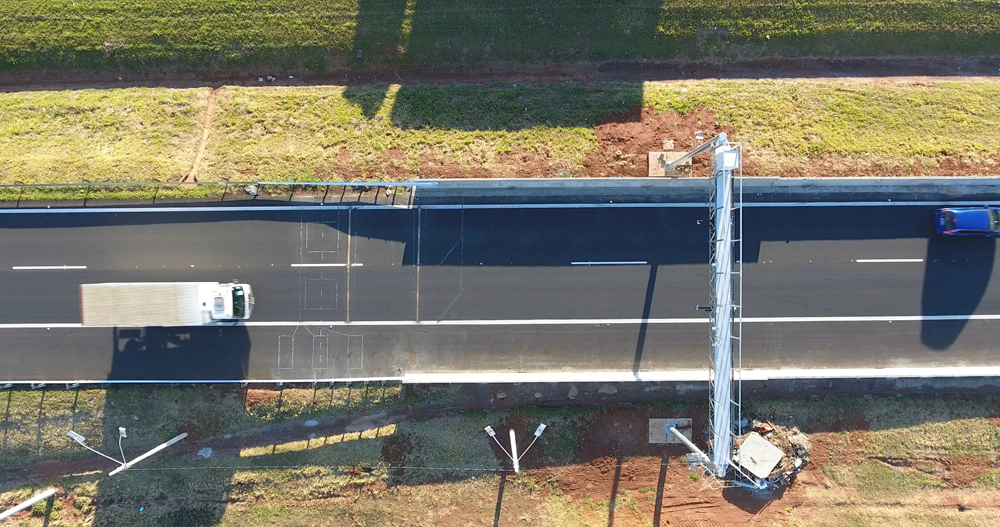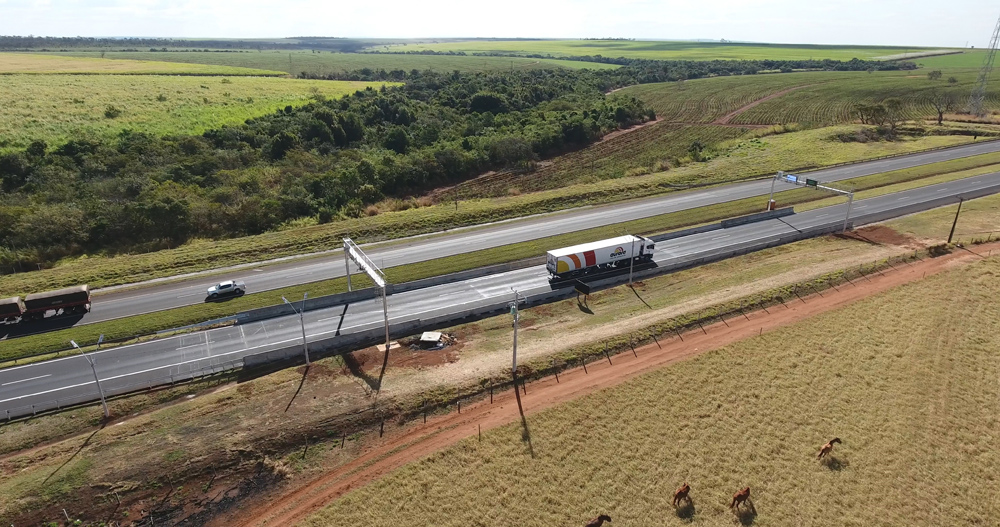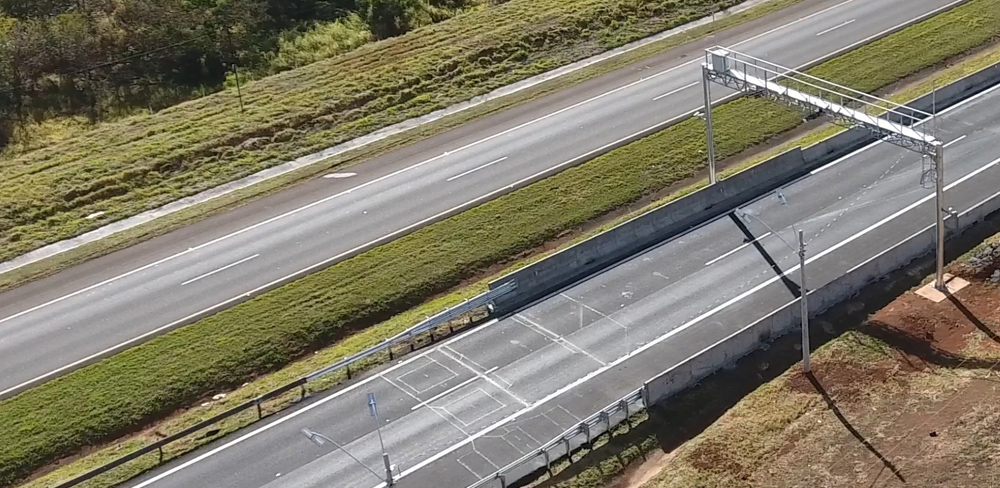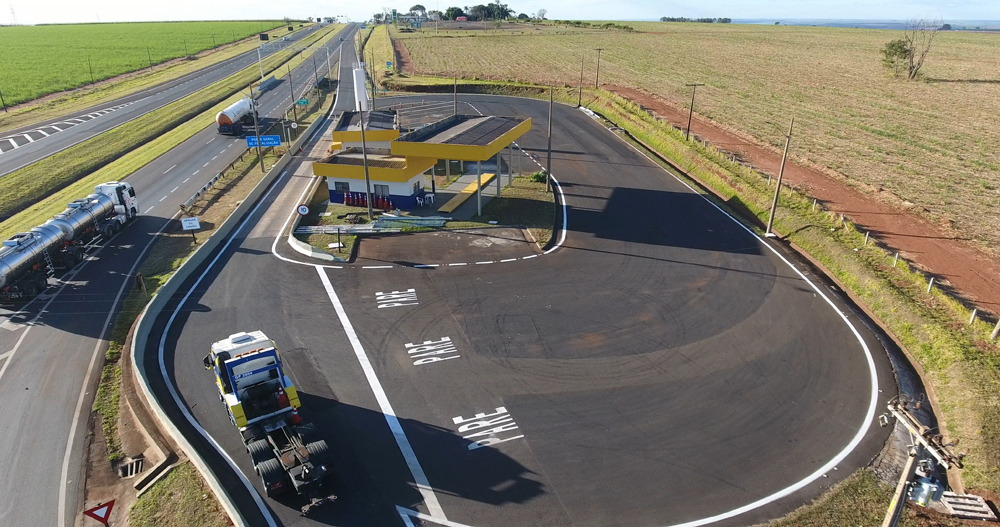
Though not new to Weigh in Motion (WiM) use for acquiring vehicle weights, Brazil has recently implemented changes to metrological standards and legislation that will lead to increased use of WiM. Faced with similar issues that weight enforcement officials experience in regions around the world, this forward-looking strategy aims to capture the benefits WiM has to offer the country’s transportation infrastructure.

“Brazil was one of the first countries in the world to use WiM,” states Douglas Gaspareto, engineer and public agent from ANTT, the National Agency of Land Transport in Brazil. Since the 1970s, strain gauge-based technology was used for screening for enforcement and subsequent weights on scales. The system is still used, and the weighing is performed in two stages: first, a selective system is used to separate vehicles that may be overweight; and second, the selected vehicles are weighed on low-speed axle scales with vehicle speeds limited between 5 -12 km/h (3-7 mph).
This process may look familiar to other countries, where WiM technology is used as a mainline screening tool for enforcement, but Brazil has been using WiM for the low-speed weighing and ticketing of overweight conditions in addition to weighing on static scales. These sites experience the same problems posed to officials throughout the world - infrastructure costs and maintenance concerns for weighing facilities, and enforcement staffing challenges to cover a large country with busy commercial traffic like Brazil.
To address this, new metrological standards and legislation were developed to enable WiM to be implemented in greater scale, and at faster speeds. Starting almost a decade ago, metrological regulations were proposed that led to extensive research and testing of high-speed weighing devices to understand their current capabilities and how they could be used on existing or future roadways.
Agencies in Brazil
With 26 states in the country, there is a mix of jurisdictions responsible for road safety, including municipal, state and federal government agencies. Cooperation to research and develop WiM further included a variety of organisations. Inmetro is the National Institute of Metrology, Quality and Technology, and is responsible for the development of metrological regulations such as required device accuracy and certifications for WiM systems. Another agency, Contran, determines the penalties for enforcement when overweight conditions, such as axle, axle groups and gross vehicle weight (GVW) limits are exceeded. ANTT is the federal agency responsible for regulating and supervising road transport of passengers and loads on federal highways or those operated by concessionaires in toll roads.

Development of the new WiM standards took place over the course of years, including experience with WiM field sites operated by universities, concessionaires and integrators to demonstrate real-world system performance and device accuracies. Intercomp’s high-speed strain gauge sensors have been installed in different locations throughout the country for this testing. The WiM strip sensors are included in systems that demonstrated the performance - and therefore feasibility - of the new standards to include HS-WiM. Having devices in place that can meet the proposed standards was an important step that moves theoretical discussions to practical implementation.
New standards
The new metrological technical regulation now active in Brazil builds upon the country’s experience with LS-WiM in the past, and the performance demonstrated by HS-WiM systems. As written, the new accuracy classes for WiM system certification are speed unlimited, allowing for certification of systems to the appropriate class at whatever speed is achievable.
Drawing from the OIML R134 WiM standard, as well as prior Brazilian metrology and the years of experience and feedback from universities, operators, and concessionaires, Inmetro arrived at type certification and in-service inspection thresholds. At system approval, performance must meet accuracies that are one-half of in-service inspection. For example, GVW accuracy classes of 2.5%, 3.5%, and 5.0% allowed error have in-service inspection thresholds of 5.0%, 7.0%, and 10.0% respectively. Similar to OIML R134, maximum permissible error (MPE) is used, so that all measurements must fall within the allowed error. For legal metrology, in Brazil and elsewhere, a high bar is set for performance for these applications.

Current and future weight enforcement still requires involving an official as with other automated enforcement activities in Brazil. For example, speed enforcement and red-light violations are detected and processed by automated systems, but require human verification before mailing the infraction to the vehicle owner. WiM systems will be no different, and this underscores a benefit of automation and centralisation of the violation data – that a single enforcement official can remotely monitor widespread automated enforcement activities, and act upon vehicle transactions that are verified.
Putting WiM to use
With the expansion of WiM standards and their use in mainline or high-speed applications, integration into existing processes and locations will realise the efficiency and effectiveness of WiM most quickly. Brazil already has interstate sites in place for transiting vehicles, where cargo and vehicles are inspected and assessment of an ICMS tax - a state tax for goods and services - can take place. Sites placed upstream of these locations allow for rapid screening and identification of overweight vehicles, where further actions can take place. Overweight vehicles are currently ticketed up to 12.5% above maximum allowable limits for GVW or axle weights, but where conditions exceed 12.5%, the vehicle is required to stop, offload or redistribute the load to return to safe operating weights for the class of vehicle.
In addition to federal highways, Brazil has a significant amount of concessionaires that operate networks of toll roads to keep highways and infrastructure maintained to the highest quality possible. Concessionaires have a list of operational obligations from the government that must be met, which include monitoring speed and weights in alignment with the guidance of the federal agency ANTT. It’s in the concessionaire’s best interest to minimise transit of overweight vehicles for safety and roadway conditions, so many employ HS-WiM as screening tools, allowing vehicles to bypass fixed stations where weight, licensing and vehicle conditions are within safe and allowable limits.

The concessionaire maintains the operating infrastructure, but employs ITS integrators to supply, install, and maintain the equipment and sites that enable monitoring, classification and detection of transiting vehicles. One such integrator is FiscalTech, based in Curitiba, which provides ITS systems throughout Latin America and other regions. Diego Hoffmann, director of operations and engineering says: “Automation of ITS systems provides efficiency benefits to drivers, concessionaires, and federal enforcement officials. A driver either bypasses a station, is diverted for further inspection, or can even interface with a remote agent via a kiosk if necessary. In this way, a single official can remotely monitor and maintain a network of stations from a central location.”
Increasing the speed
Although HS-WiM is already used for screening for overweight traffic, and LS-WiM (along with static weighing) is employed for overweight enforcement, the potential benefits of HS-WiM enforcement have long been recognised by Brazilian officials. With a robust economy enabled by commercial traffic, and a landmass of 3.3 million square miles (8.5 million square kilometres), the over 150,000 miles (240,000 km) of roads have been rapidly expanding and tested by the heavy traffic of an active economy.
Implementation of HS-WiM for enforcement will protect and maintain that growing infrastructure and its contribution to the vehicles which use it. Rapid and automated weighing promotes fairness and competition in trade, and in doing so on the mainline at speed benefits the vehicle operators, bypassing low-speed or even static weighing processes that take time and funding to operate and maintain.
Douglas Gaspareto from ANTT concludes: “With applying HS-WiM on a large scale, it will be possible to increase the number of vehicles that are effectively weighed and not impair the road flow. By using an effective and suitable weighing system, it is possible to reduce accidents caused by overweight, rollover, and lack of braking capacity, and reduce damage to the pavement and increasing the durability of cargo vehicles.”
 ABOUT THE AUTHOR:
ABOUT THE AUTHOR:
Jon Arnold is market specialist with Intercomp
(All images are ©FiscalTech and show the HS-WiM site at Entrevias concessionaire near Orlandia, in the state of Sao Paulo, Brazil)











